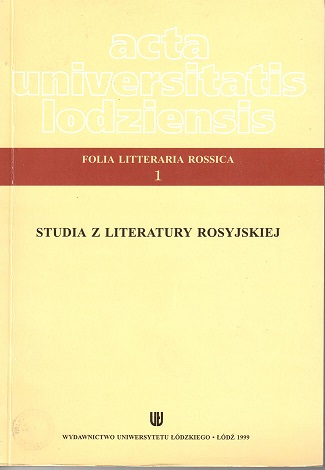Świece trzykrotnie wypalone
Candles burned three times
Author(s): Anna BednarczykSubject(s): Poetry, Lexis, Semantics, Russian Literature, Existentialism, Hermeneutics
Published by: Wydawnictwo Uniwersytetu Łódzkiego
Summary/Abstract: The song of Vladimir Vysotsky Fused candles - this is a lyrical poem about succeeding life and death, about a man killing the world of objects, nature and space, about the repetition of everything. The poem is written with a two-legged anapaest, in odd-numbered lines, hyper-catalytic. Accompanying his musical text is written in a waltz-like rhythm of 3/4. It should be noted that the lexical stress corresponds to the musical stress. The song in question was translated into Polish three times. These were translations of Bojtseh Pashkovich, Vaclav Kalet and Andrzej Mandalyan. Two of them retain the versioning scheme of the original, one (V. Pashkovich) replaces it with repetitive even seven-syllable lines, replacing simultaneously Russian male rhymes with Polish female ones, which, however, does not violate the musical layer of the work. The main element of the lexical-semantic plan of the song is a chain of associations that repeat images-symbols of death and life, and at the same time symbolize repetition. The translated texts are to varying degrees compliant with these images and this composition by V. Vysotsky. Despite the fact that the interpreters used the strategy of reconstruction, design and deconstruction of the text in translation differently, they reacted differently to the musical plan of the work, and in spite of the fact that in their Waxing candles there appeared all kinds of mistakes and inaccuracies, we note that all They tried, as it seems to us, to convey the basic idea of V.Vysotsky's poem and its form - the form of the author's song.
Journal: Acta Universitatis Lodziensis. Folia Litteraria Rossica
- Issue Year: 1999
- Issue No: 1
- Page Range: 159-173
- Page Count: 15
- Language: Polish

